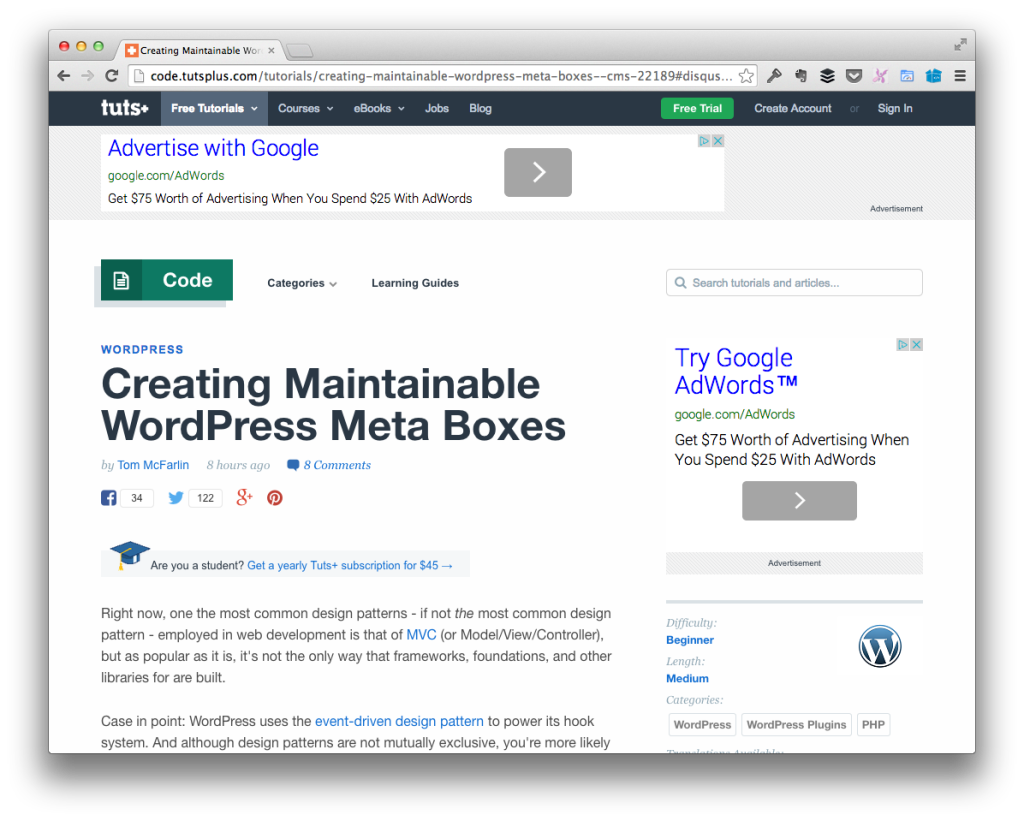Regardless of the type of software that you build either for a living, for a hobby, or for both, one of the most challenging aspects of the field is trying to write maintainable code.
That is, code that’s organized, follows a standard, is easily read, and adapts to change over time as the environment and requirements of the overall software changes.
It’s not an easy task and people far, far more experienced than I am are still talking about how to do it.
Still, that doesn’t mean that those of us who have been working in WordPress for some time haven’t learned some strategies for works, what doesn’t, and what’s proved to be maintainable WordPress code throughout the years of development.
Writing Maintainable WordPress Code: Author’s Commentary
This past week, I started a new series on Tuts+ that’s geared towards those who are looking for ways to make their plugin code – specifically, code that includes meta boxes – more maintainable.
Obviously, this particular area is one that could stand for a plethora of examples, but this is where I’ve opted to start.

Throughout the series, I’m going to be walking readers through how to build a WordPress plugin that I’m calling Author’s Commentary that allows us to collect information and notes at a post-specific level in the WordPress dashboard.
The plugin will use a combination of a tabbed meta box, various input elements, and the usual strategies and practices for sanitizing and serializing data.
This page will serve as the landing page for the articles that will make up this series:
- Creating Maintainable WordPress Meta Boxes
- …more to come.
As the series progresses, I’ll be updating this page to include more references to each of the articles. In the meantime, feel free to share your feedback on the articles linked above.

